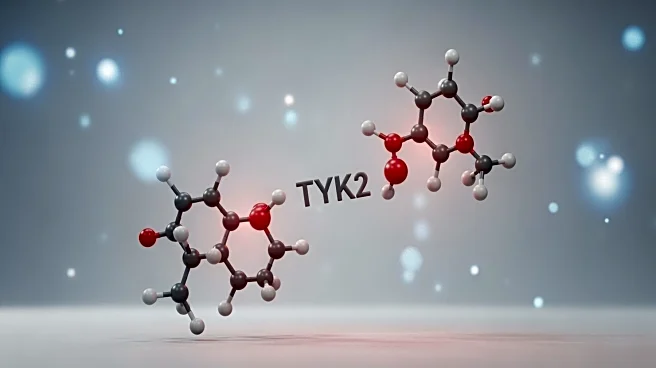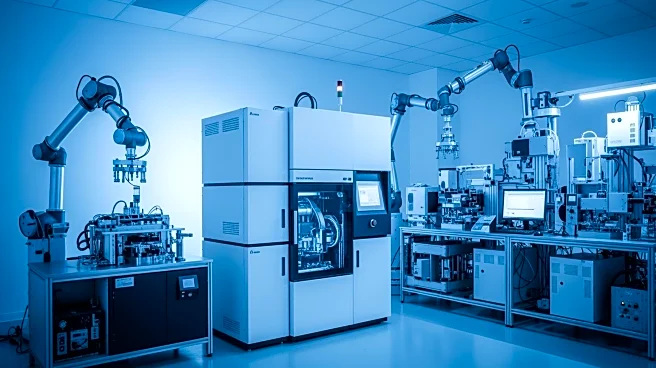What's Happening?
A recent study has developed a machine learning model, ML3-mix-DPLIFE-FS, to predict the bioactivity of METTL3 inhibitors with high accuracy. The model integrates protein-ligand interaction profiling and machine learning techniques
to enhance the discovery of METTL3 inhibitors. By combining datasets DS1 and DS2, sourced from CHEMBL, the model improves chemical space coverage and predictive performance. The study highlights the importance of incorporating protein-ligand interaction features, which significantly improve the model's robustness and accuracy. The ML3-mix-DPLIFE-FS model demonstrated strong predictive capability, achieving a Spearman correlation coefficient of 0.90, outperforming conventional molecular docking methods and other deep learning-based predictors.
Why It's Important?
The development of the ML3-mix-DPLIFE-FS model is significant for the pharmaceutical industry, particularly in the field of drug discovery. METTL3 inhibitors are crucial for therapeutic interventions in various diseases, including cancer. The model's ability to accurately predict inhibitor bioactivity can accelerate the identification and development of effective drugs, potentially reducing the time and cost associated with drug discovery. By improving the understanding of protein-ligand interactions, the model aids in designing more potent inhibitors, which can lead to advancements in treatment options and improved patient outcomes.
What's Next?
The study suggests further validation of the model using newly available METTL3-inhibitor cocrystal structures. This validation could provide deeper insights into the binding interactions and enhance the model's predictive accuracy. Additionally, the identification of key residues influencing METTL3 bioactivities offers opportunities for targeted drug design, focusing on these critical interaction sites. Future research may explore the application of this model to other protein targets, expanding its utility in drug discovery across different therapeutic areas.
Beyond the Headlines
The integration of machine learning with protein-ligand interaction profiling represents a shift towards more sophisticated computational methods in drug discovery. This approach not only improves predictive accuracy but also provides structural insights that are essential for understanding the mechanisms of drug action. The study underscores the potential of machine learning to transform traditional drug discovery processes, paving the way for more personalized and effective treatments.











